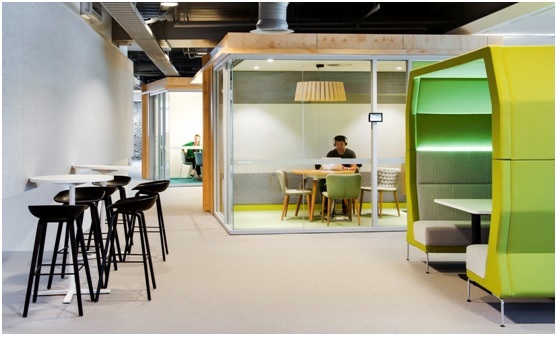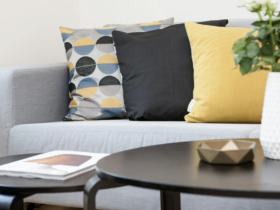As you are no doubt aware, the design of your workplace can have far-reaching consequences for your staff and for your business as a whole. A top quality office design will provide an ideal working environment, allowing staff to perform to the best of their ability, producing better results for your company.
Research from Gensler, connected to their Workplace Performance Index, has found a direct link between business performance and designs that enable four key workplace behaviours, or ‘modes’. Indeed, companies embracing these designs enjoy bigger profit margins, higher staff satisfaction levels, easier recruitment and more.
In this article, we look at those four key behaviours, outlining how your interior design can help to facilitate them.
1.Focus
According to a 2013 study from the University of Sydney, a lack of sound privacy was the single biggest drain on employee morale, trumping even things like workplace cleanliness. In short, this is because employees need to be able to focus on their work, free from distractions and free from feeling like they are distracting others.
However, most businesses are failing to create the right environment for this. In fact, a 2014 Ipsos study found that workers lose as much as 84 minutes of working time per day to noise distractions. In terms of design, areas specifically intended for more quiet, concentrated work can help, and staff should have the freedom to use these when it suits them. Meanwhile, some more senior workers may also benefit from their own private offices.
2.Collaboration
Next, your design needs to allow collaboration between staff members and between different departments. The need to promote teamwork is one of the reasons why the open plan office has become so dominant, but recent research has highlighted the drawbacks of this design, including the lack of privacy afforded to employees.
Rather than focusing on making sure everyone collaborates at all times, many businesses are now working with their chosen office design company to create separate areas that are intended to encourage collaboration, without causing distractions for those staff members who want to get on with individual tasks. For instance, you may choose to include a designated collaboration lounge, where employees can meet up and share ideas.
3.Socialisation
Although your employees are being paid to work, findings published in Psychology Today by Nitin Nohria, Boris Groysberg and Linda-Eling Lee suggest that employees who do not experience a sense of friendship with colleagues are more prone to employment dissatisfaction and decreased motivation levels, leading to higher staff turnover.
Socialisation can also help to build effective communication, allow new recruits to settle more quickly and increase knowledge sharing, so it pays to come up with a design that acknowledges this. Dining areas and outdoor social spaces can be great for team bonding, while companies like Google have also embraced games areas.
4.Training
The last of the four key workplace behaviours that should influence your design is training. Whether it is teaching new staff how to perform their role, developing top performers into future leaders or reinforcing product knowledge, your office needs to make learning not only possible, but effective and enjoyable.
Libraries and resource areas can facilitate learning within the office and collaborative spaces can play an important role in assisting the coaching offered by senior staff. Moreover, meeting rooms equipped with projectors, interactive whiteboards, walls painted with blackboard paint and other visual media devices can help with the theory element of staff training.
Author: Reno Macri
Reno is a Director of a leading exhibition and event company Enigma Visual Solutions, specialising in retail designs, interiors, graphic productions, signage systems, office interior design, event branding, conference set design and much more. He specialises in experiential marketing and event productions. He enjoys sharing his thoughts on upcoming marketing ideas and design trends.
























